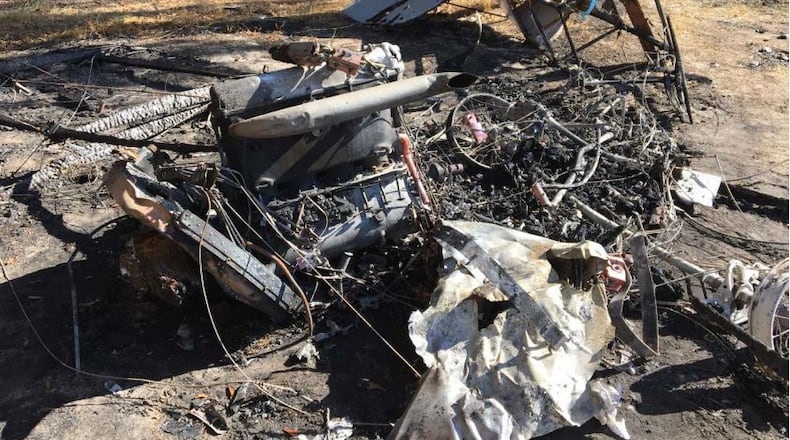An airplane involved in a crash that killed two people in Pike County two years ago had a history of problems — dating as far back as 2013 — during takeoff, according to an accident report released this week by the National Transportation Safety Board.
Pilot Ronald Alexander, 74, and passenger Larry Enlow, 68, were killed when the Curtiss JN-4D crashed at the Peach State Airport in Williamson in November 2016, The Atlanta Journal-Constitution previously reported. The aircraft, often used to train pilots, was widely used during World War I.
An autopsy report revealed that Alexander died from extensive thermal injuries and Enlow from blunt force injuries to the head and torso related to the crash. Both had medications in their system, according to the accident report, but neither were considered impairing.
A witness at the scene of the deadly crash said, “the airplane seemed to hesitate for an instant and then there was silence,” according to the report released Monday. Similar findings were written in the aircraft builder’s blog post dated April 23, 2014, describing the engine as “running rough with hesitation and backfires for a few seconds when accelerating.”
RELATED: Plane crashes in Georgia, elsewhere
Credit: The National Safety and Transportation Board
Credit: The National Safety and Transportation Board
To correct the issue, the builder adjusted the engine idle speed from 350 rpm to 480, according to the report. Not long after the adjustment, the builder discovered an oil leak, which led to an overhaul of the engine, according to the accident report. The plane was back in the air by July 2015.
Aside from the engine, the plane also had problems with the propeller, which broke off and was found in pieces miles away from the crash site, according to the report.
In a May 6, 2013 blog post, the builder wrote that the propeller was made for an Hispano-Suiza E engine, making it too thin for the hub attached to the Hispano-Suiza E2. Instead of purchasing a different propeller, he bought a new hub and installed it on the plane to accommodate the smaller blade.
A crack was noticed near the tip of the propeller, which was returned to the manufacturer, St. Croix Propeller, where it was repaired. The manufacturer noted a “fatigue cracked rivet” halfway down the inside of the wood, according to an October 13, 2015 email. To fix this, the rivets were doubled up, with repairs completed and the propeller installed by November 2015.
The plane had its last inspection in June 2016 and was flown for roughly 10 hours between the inspection date and crash, according to the accident report. No charges were filed in the crash, which the NTSB ruled was a result of a fire.
The plane was on display at the Candler Field Museum, which Alexander founded in 2005. Alexander was inducted into the Georgia Aviation Hall of Fame in 2013.
In other news:
About the Author
Keep Reading
The Latest
Featured



